Marmots are essentially overgrown ground squirrels. Unlike most mammals, the marmot is active during the day and can be readily observed. There are several species in the Pacific Northwest. See below for examples of habitat, feeding, tracks, scat, burrows, and young.
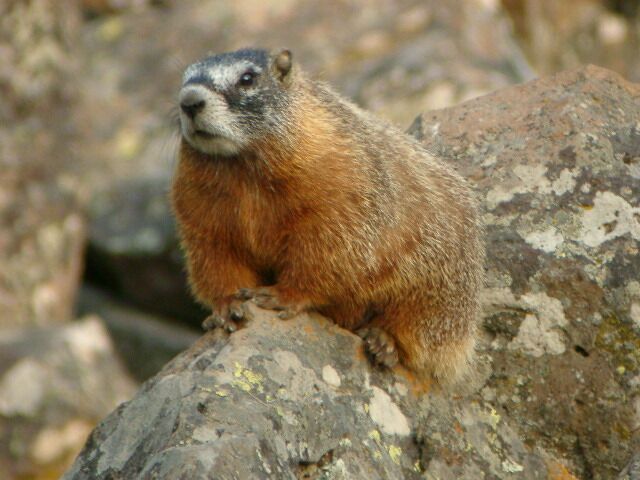
Yellow-bellied Marmot, Yellowstone National Park
The primary marmot in the Pacific Northwest is the yellow-bellied (Marmota flaviventris) (pictured above). In the Washington Cascades and north to Alaska, look for the hoary marmot (Marmota caligata) (pictured below). The Olympic marmot (Marmota olympus) is known from a limited population in the mountains of the Olympic Peninsula. The woodchuck (Marmota monax), primarily an eastern species, does reach the northeast corner of Washington.
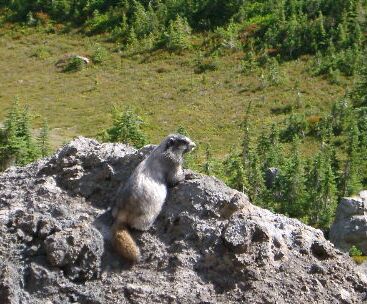
Hoary Marmot, Indian Heaven (between Mt. Adams and Mt. St. Helens)
The yellow-bellied and hoary marmots generally prefer rocky slopes (see below) or ledges and can often be found resting on a prominent rock with a good view of any approaching predators as in the photos above. There must, of course, also be a supply of vegetation close at hand. Sometimes, however, fallen logs serve as a substitute for the rocks.
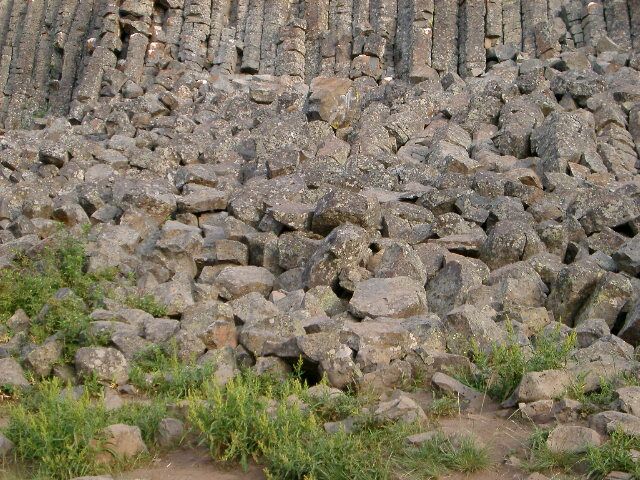
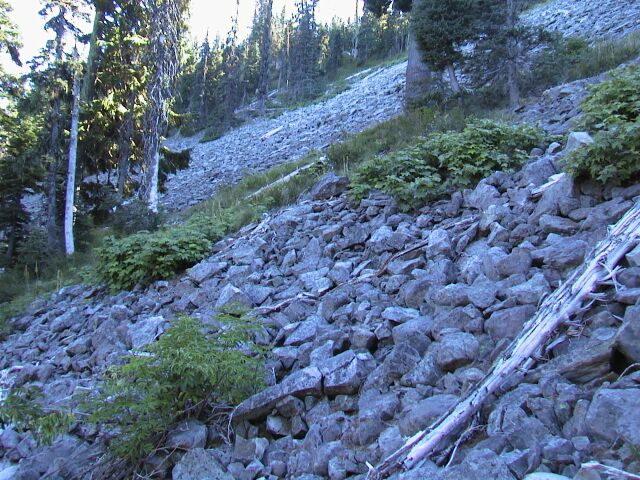
Some authors suggest that suitable denning habitat may be the primary limiting factor in the distribution of marmots in the northwest.
Marmot must lay on fat through the short summer months to prepare for the long hibernation. Biologists report that marmot require abundant herbs, grasses, and sedges.
My own observations suggest that signs of marmot feeding may be more subtle than you might expect from such a large rodent. Although I expected to see heavy impact from their feeging, I found that at times they can be selective in what they eat but also are rather sloppy. Here we see the flower stalks cut from two valerian plants but one was left at the site.
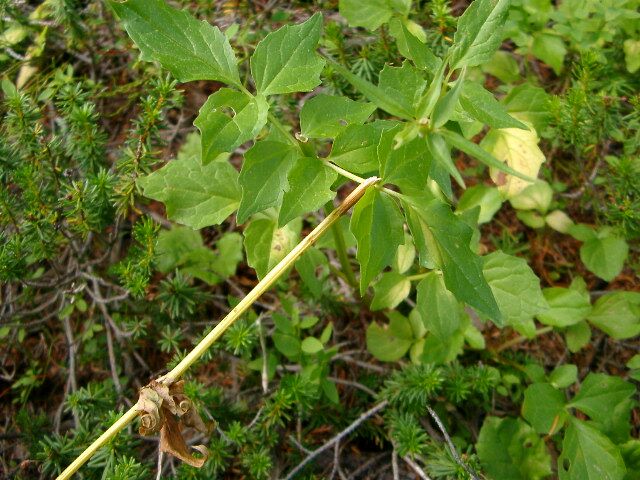
Marmot do not leave very many tracks due to their habitat. However, you can occasionally see them in sandy areas near the talus slope. They have an alternating stride.
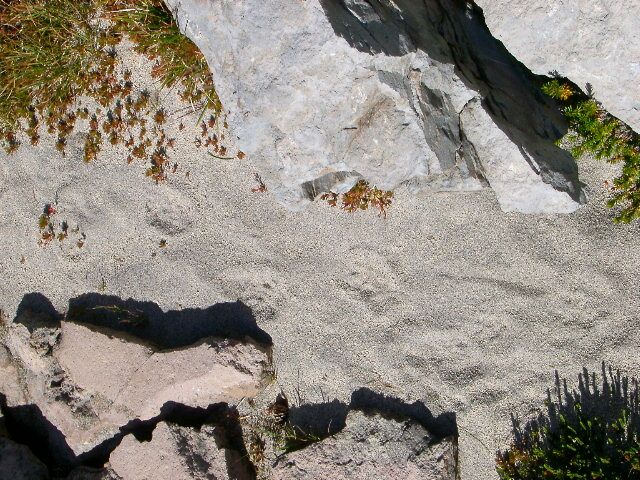
Here is an example of very fresh scat of a yellow-bellied marmot.
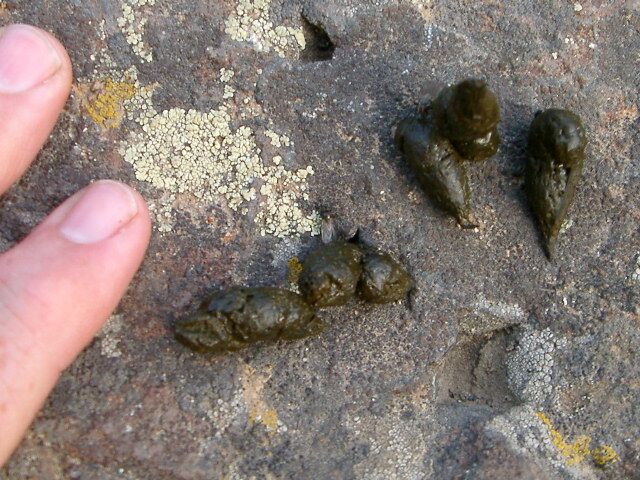
Often you can find a toilet area with a concentration of scat suggesting a long history of use. The size and shape of scat seems to vary with diet as well as with size of the marmot.
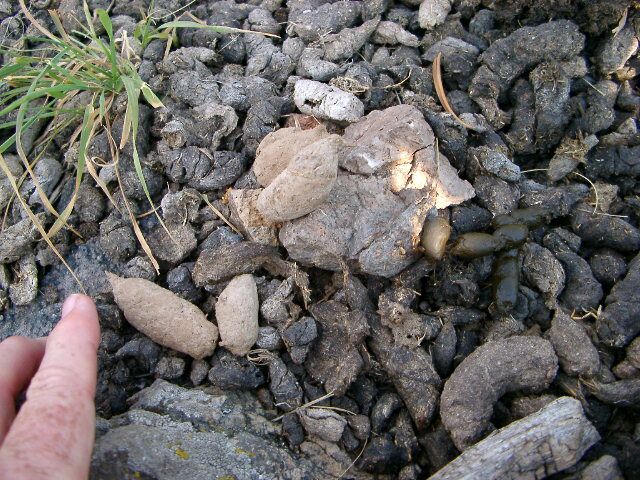
Scat of a hoary marmot.

You may have to hunt to find the marmot's burrow system in the scree slope. Several holes are dug out among the rocks.
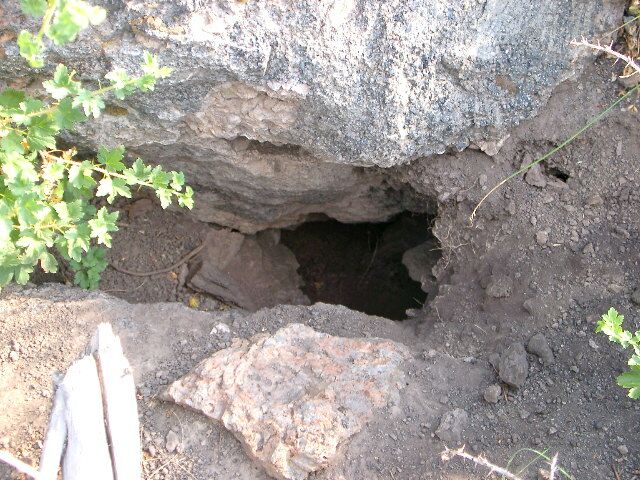
This hoary marmot burrow was in the meadow next to a talus slope.
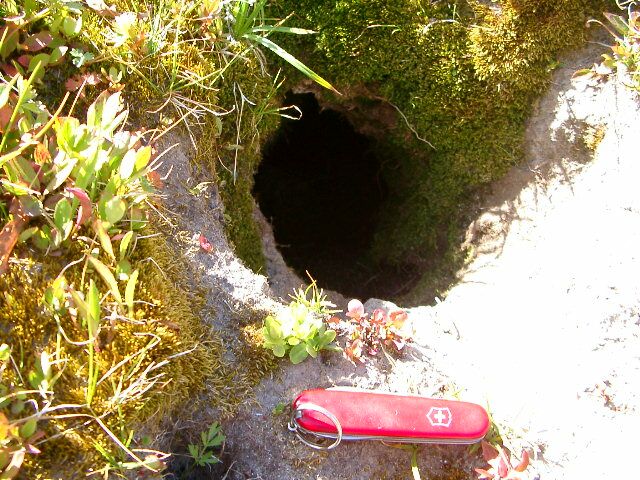
Marmots are quite social. A colony may have a territorial male, several females, and the young of the year. Here are two young marmot at play.
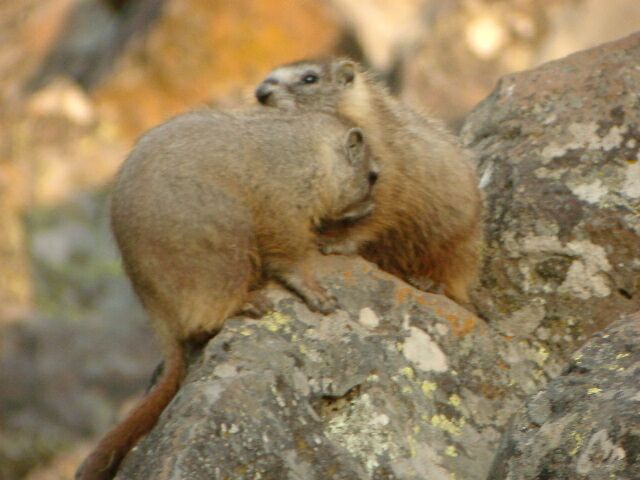
When the yellow-bellied males become sexually mature in their second year, the dominant male evicts them from the colony, forcing them to find their own hibernation site.